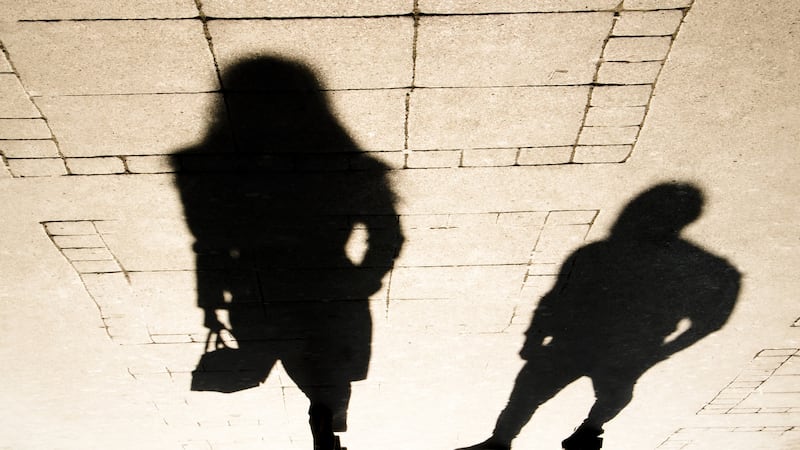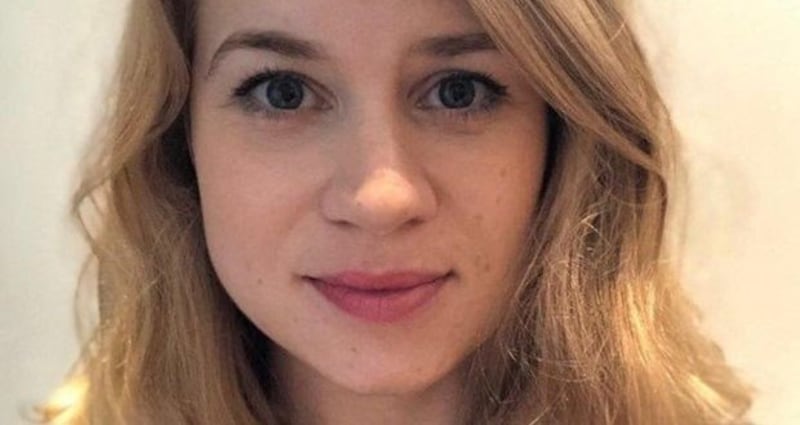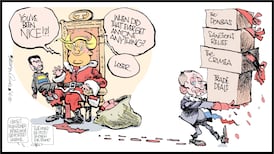Violence against women barely exists. It is like radiation – deadly but invisible. Every now and then, a particularly terrible incident forces it to the front. But most of the time, it is the deep background of life. Its very ubiquity makes it imperceptible.
One of the phrases that hovered over the Troubles was that used in December 1971 by the British home secretary, Reginald Maudling: an acceptable level of violence. The acceptability of everyday violence against women is made manifest by what it is not. It is not news.
In an excellent speech in December 2019, Garda Commissioner Drew Harris called attention to this lack of attention. There were, he pointed out, 40 domestic homicides in Ireland between 2016 and 2018. During the same period, which included the most violent period of the Hutch-Kinahan gangland feud, there were 26 homicides related to organised crime.


Harris was not, of course, seeking to minimise the awfulness of gangland violence. He was pointing, rather, to a vast disparity in media coverage and in public and political discourse.
Most of the killing, which is done by men – husbands, partners, sons - against women, quickly subsides into anonymity and amnesia
Drug wars are good copy. They fit into one of the great mythic genres of modern popular culture – the gangster movie and, especially in this century, the gangster serial. From The Public Enemy to The Godfather to The Sopranos, Suburra and Love Hate, we have learned to consume this kind of violence as both spectacle and perspective. It is one of the ways in which the understand the underlying dynamics of the capitalist societies we inhabit.
Femicide, on the other hand, is just there. Occasionally, a perpetrator achieves tabloid hate-figure status and the infamy that is indistinguishable from fame: “Wife killer Joe O’Reilly pumping iron in prison gym to get fit for badminton”, screams a headline.
Even better, of course, if the perpetrator is a woman and the victim is a man. There's a trope for that – the spider that devours its mate, the vamp, the femme fatale – and it can be instantly attached to, for example, Catherine Nevin. It slots into a bigger story.
Yet most of the killing, which is done by men – husbands, partners, sons - against women, quickly subsides into anonymity and amnesia. The paradox is that there is simply too much of it for this or that murder to be memorable. And the big story into which it fits is one that there is still deep resistance to telling as it is – the persistence of misogyny as a social system.
Harris pointed out that in the 32 years before 2019, 225 women and 16 children had been murdered in Ireland. Eighty eight per cent of the women knew their killer and 56 per cent were killed by a current or former partner.
But femicide is merely the abnormal edge of a mundane normalcy. Domestic abuse – mostly, though not exclusively, by men against women – is the constant drumbeat of Irish crime.
Domestic abuse calls
More so now than ever. In that speech in December 2019, Harris said his force was dealing with 30,000 domestic abuse calls a year, or up to 600 a week. The then minister for justice Charlie Flanagan rightly called those figures "stark, shocking and disturbing".
Even women who do not experience male violence directly, experience it all the time as a live possibility that shapes their thoughts and movements
Last year, Gardaí received 43,000 domestic abuse calls – well over 800 a week. The lockdown has been a fast breeder reactor for violence in the home. Also last year, there were just three convictions for the new crime of coercive control, created in 2019. Two of them were after guilty pleas, so there was a single jury trial.
Misogynistic violence is organised crime. It is organised, not by a gang, but by an idea: male entitlement. It governs everything from the pervasive assumption that it is girls and women who must learn to control their own presence in public places, to the vastly more aggressive response, as we saw in London at the weekend, of the police to women drawing attention to misogynistic violence than to, for example, male football fans celebrating Liverpool’s league title last season. It forms a unified system that connects jokes to murders, shouts in the street to lower levels of pay and pensions.
How do you dismantle this system? Policing and law are of course crucial, and the suggestions at the Citizens’ Assembly for a single governmental body to deal with the issue are very well made.
Male entitlement
But the point of more and better law enforcement is not just to get justice for individual victims. It must be part of a much broader effort to defamiliarise misogynistic violence, to make it strange. It must be seen to transgress norms – and not, as it does now, to enforce the still dominant norm of male entitlement.
For that to happen, men have to be shocked by this violence. Women aren’t and can’t be. Horrified and enraged, of course. But to be really shocked you have to not expect it. Even women who do not experience male violence directly, experience it all the time as a live possibility that shapes their thoughts and movements.
It is men who can be scandalised, appalled, outraged. It is men who can challenge, among each other, the daily assumptions of entitlement that maintain the grotesquely acceptable level of violence.









